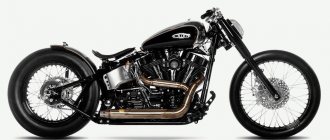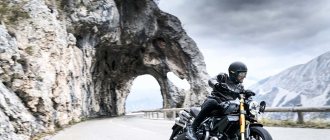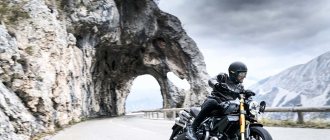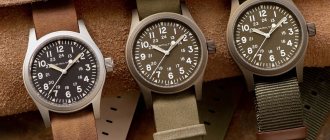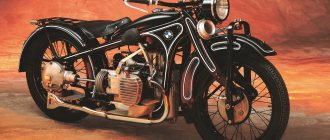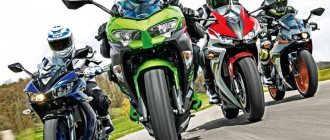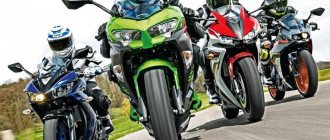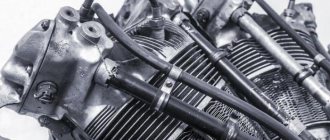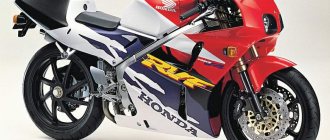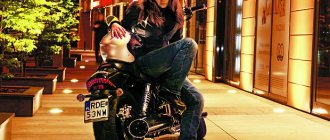But here's the challenge: are there any motorcycles that won't look old and ugly in 20 years, and are there any motorcycles that will last for those 20 years? We are testing two contenders for the list of indestructible devices with a classic design.
BMW R NineT Pure 1200
The air-cooled boxer engine with a longitudinal crankshaft and cardan drive to the rear wheel is a hallmark of BMW. The company's first motorcycle back in 1923 was the R32, built according to this design; I wouldn't be surprised that the last one will also be a boxer. During the transition to liquid cooling, it was decided to leave the classic air motor in production, equipping it with the anniversary R NineT, released for the 90th anniversary of the brand, but the demand for this essentially collectible model exceeded the wildest expectations of marketers, which led to the emergence of a whole family of motorcycles built on an essentially archaic platform. The simplest and most inexpensive in the family will be Pure, a participant in our test.
It is distinguished from the very first NineT by a simplified dashboard without a tachometer, a regular fork, not an inverted one, front calipers with tangential mounting, cast wheels, not spokes, and a gas tank made of steel, not aluminum. These were simplifications to reduce costs. Among the complications, it is worth noting the traction control that appeared at the request of customers, which the progenitor of the series did not have. Other electronics, such as quickshifter, cruise control or corner ABS, are not provided for these motorcycles. Experienced drivers do not need this, and beginners are not the target audience for such equipment.
The motorcycle is made deliberately simple not only to keep its price below one million rubles, but also to simplify the customization process. For example, all lighting equipment is not linked into a digital Can-bus, which allows you to painlessly change the headlight, brake light and turn indicators to any tuning without causing errors in the computer and the “Dzhekichan” icon lighting up on the dashboard. The “improvement” procedure has been simplified not only technically, but also ideologically: many accessories can be discussed when ordering a motorcycle so that they can be installed directly at the factory, plus there is also a lot of interesting stuff in the BMW brand tuning catalog, and a brand dealer will be happy to supply them to you in his repair area during pre-sale preparation or scheduled maintenance.
There are two elements of the production bike's appearance that I don't quite like stylistically. The first one is cast wheels; after all, it looks more logical on spokes. The second is a huge muffler can with a plastic end cap. It looks not only massive, but also too modern. But the casting is stiffer than the spokes, and on such wheels the motorcycle steers more accurately, and the large internal volume of the muffler well emphasizes the lower sound range of the exhaust and sounds very solid, perhaps even more interesting than the compact tuning Akrapovic.
The cylinders sticking out to the sides make the motorcycle wide, and it is perceived as a spherical horse in a vacuum - you sit on it, like Munchausen on the core. This feeling is also facilitated by the low steering wheel, towards which you have to reach forward a little, leaning your whole body. The seat height is normal - 805 mm, but the footrests are located high, so that the driver's legs are bent at the knee more than 90 degrees. The footrests are located under the seat, so you can easily stand up on bumps.
BMW R nineT
The roadster, whose spectacular appearance is the exclusive merit of designer Ola Stenegard, is created on the basis of an air-oil “opposite” with a volume of 1170 cm3 (110 hp) and a six-speed gearbox from the R1200R roadster. Only the gear ratio is chosen “shorter”: 2.91 versus 2.75 - like the old “goose”. A non-adjustable inverted fork is installed at the front, and a monoshock absorber at the rear, adjustable by spring preload and rebound hydraulics. Of the electronic assistants - only ABS.
STORY
2014 For its 90th anniversary, BMW MotoiTad presented the neoclassic R nineT with retro motifs in design (in-house index K21). The engine is based on the 1170 cm5 air-oil boxer and six-speed gearbox from the R1200R roadster. Only the gear ratio is chosen “shorter”: 2.91 versus 2.75 - like the old “goose”. A non-adjustable inverted fork is installed at the front, and a monoshock at the rear, adjustable by spring preload and rebound hydraulics.
2016. From the “mother” R nineT, an “off-road” version of the Scrambler (K23) emerges, which was created by installing a traditional “telescope” with rubber corrugations, simplified instruments, a high steering wheel, alloy wheels of a different size (front - 19 inches) and an upturned “ double-barrel silencers. Spoke goose wheels and toothy tires are offered as options.
2017 The BMW R nineT family expands with three new variants. The most simplified Pure (K22) is a retro roadster, which has only the essentials: a regular telescopic fork, 17-inch cast wheels, a single muffler and a single speedometer. Vintage Racer (K32) - everything is the same, but with a semi-fairing, front and rear seats, full-fledged instruments and an aluminum “hump” instead of a passenger saddle. The Urban G/S SUV (KZZ) is a stylization of the already well-known Scrambler after the legendary R80 G/S: a high front fender, a “fly swatter” around the headlights and a characteristic coloring with a red saddle. The “regular” R nineT receives not only an “upside-down” damping adjustment, but also a “blunted” geometry.
It is significant that from the very beginning the Bavarians relied on the possibility of various personalization of the model, not only offering an extensive catalog of accessories and options, but also in every possible way encouraging any technical creativity based on Nine-Ti. So when such a successful model began to multiply with various modifications, no one was surprised.
The first in 2021 to branch off from the “mother” R nineT (in-house index K21) was the “off-road” version of the Scrambler (K23), which was obtained by installing on the existing platform a traditional “telescope” with rubber corrugations (it’s not even a cartridge), simplified instruments, high steering wheel, alloy wheels of crossover size (front - 19 inches) and upturned “double-barreled” mufflers. It’s just a pity that spoked wheels from the “goose” and “toothy” tires, so appropriate on off-road, turned out to be available exclusively as an option.
And six months later, already in 2017, the BMW R nineT family takes its current form, having grown to five versions. The most simplified Rige (K22) is a retro roadster, which has only the essentials: a single color, a regular telescopic fork, 17-inch cast wheels, a single muffler and a single speedometer. Vintage Racer (K32) - everything is the same, but with a semi-fairing, clip-ons, full-fledged instruments and an aluminum “hump” instead of a passenger saddle. The Urban G/S SUV (KZZ) is a stylization of the already well-known Scrambler after the legendary R80 G/S: a high front fender, a “fly swatter” around the headlights and a characteristic coloring with a red saddle. The “regular” R nineT receives not only a “reverse” with damping adjustment, but also a “blunted” geometry: the fork angle has increased from 25.5° to 26.8°, and the base has increased from 1476 mm to 1487 mm.
From the gas cap to the tips of the mirrors, this motorcycle is filled with the spirit of “that time”, when everything was made of metal, and not of despicable plastic. It’s the new low-powered cars whose manners are smoothed, combed and subdued, while the nineT has the last of the air-oil Mohicans, without the godless water pump and radiators the size of a TV. The torque of the opposed 1170 cc “two” is spread throughout the entire range, starting from 2000 rpm. And at the same time, there are no driving modes - everything is concentrated in the right handle. Changing gears is an event. The old-fashioned “mechanics” do not like rushing. An attempt to accelerate without squeezing the clutch, clicking the gearbox up synchronously with the awakened rev limiter, in a classic BMW causes nothing but misunderstanding, which is why the gear change comes out jerky and stumbling. Therefore, you interact with it the old fashioned way: up with the clutch, down with the throttle. And what inertia from the rotation of the crankshaft with the cardan! You open the gas in an inclined position - and, depending on which direction you turn, the “opposite” tries to either zealously rise or fall even lower.
Solidity of sportbikes and street bikes? May it be for you! Those who asked for the “rebellious fifties”, get it and feel how the rear of the Nine-T kicks under aggressive shifts and changes in traction. Although the “Bavarian” is capable of being meek, if you don’t whip him with the throttle in vain. Then he, assisted by an inverted fork, will confidently draw a high-speed arc, and the only tilt limiter will be the cylinder covers.
However, BMW, even if it was created by people nostalgic for the past, but living in the modern world. Therefore, it is gifted with human ergonomics, Brembo radial calipers with ABS, a steering damper, and normal suspensions.
The opposed “two” air-oil cooling and all its weak points have long been known, and most have been corrected. And in general, it does not cause any global problems, but, as they say, there are still nuances.
For example, there are cases where in vehicles with mileages of more than 70,000 km, valves became stuck due to worn or broken springs, which led to them colliding with the piston. You can diagnose the symptoms of the upcoming “Stalingrad” at a scheduled maintenance. Moreover, it is necessary to set the thermal gap, to the value of which the “air vent” is extremely sensitive, every 10,000 km. How to synchronize the throttle valves, by the way.
Oil gluttony, albeit in extremely modest quantities, is considered the norm rather than the exception. Especially if the engine was run in too carefully, which is why the piston rings did not rub in properly, or if it was filled with oil of a lower viscosity than the recommended 15W50. So you have to regularly monitor the level through the viewing window.
Break-in, by the way, happens very slowly. Therefore, if you like a copy with a mileage of less than 5000-6000 km, then be prepared that the operation of the “air vent” may seem rough and vibration-laden.
Some owners complain that the boxer twin, especially on models with forward flow, can sometimes stall without good reason (most often when downshifting and idling). The problem is largely explained by the ultra-lean mixture, on which, in the name of meeting economic standards, a very old engine is forced to run, and this can be treated either by flashing the control unit or by installing a Booster-Plug device (a simplified analogue of the Power Commander).
The gearbox, like all “air” BMWs, has never been distinguished by either softness or clarity of shifts. And this is not so much due to the souring hinges of the shift rods as to the “old-mode” design of the “six-speed”. This means that when handling it you should be calm and persistent, although in this case, even in this case, engaging first gear or searching for neutral can take quite a long time—reversing the throttle with double-depressing the clutch saves the day. A single-disc clutch, by the way, if you don’t use it atrociously (don’t participate in drag races, don’t anneal the tires and don’t climb on the rear wheel again), can withstand up to 60-70 thousand km. Nightmares about crumbling bearings and chewed gears of the gearbox, which haunted more than one generation of “opposite” vehicles, seem to be a thing of the past. However, caution still doesn't hurt.
After all, one of the recall campaigns for the R nineT, released between 2014 and 2021, related specifically to the cardan drive: the bolt that attaches the pendulum to the frame could become loose and lead to an accident.
The main electrical problem is the weak standard battery: it rarely survives to the end of the season. Moreover, periodic prevention using a pulse charger only partially saves, slightly delaying the moment when the motorcycle refuses to start when cold. It’s bad that a voltage drop in the network is fraught with the appearance of numerous errors in the system. Nine-Ti has a couple of outlets for connecting, say, navigation and an electrically heated vest. In addition, they are predictably “tailored” for cheap gadgets, which is why you will probably need an adapter to connect third-party devices. If there are more than two “additional stages”, then, taking into account the CAN bus used by the Bavarians, the wires will have to be connected strictly in certain places: directly to the battery, for example, or to the charging cable under the driver’s seat.
ENGINE
The opposition “two” air-oil cooling with a volume of 1170 cm3 and the “six-speed” went to the “classic” R nineT from the R1200R roadster. The power unit is generally reliable, although it does require some attention. Mechanics are aware of its extreme sensitivity to “floating” thermal valve clearances and out-of-step throttle synchronization, which is why checking and adjusting is required every 10,000 km. A certain amount of oil consumption is considered the norm, which means that the oil level has to be monitored regularly.
SUSPENSION
The owners of all versions of the BMW roadster have de facto one complaint about the suspensions: they are too simple for their class. Moreover, if the “regular” R nineT has more or less decent damping on an inverted fork with 0 46 mm stays (until 201/2019), the 43 mm “telescope” of other versions (it’s not even cartridge) is set to frankly measured okay The most common treatment is to replace the springs AND fluid in the fork along with purchasing a new monoshock.
BRAKE SYSTEM
Brembo radial calipers are exclusive to the top-end R nine! The rest use traditional 4-piston calipers of the same brand. The anti-lock braking system kicks in early, but generally correctly. By the way, the entire system should be pumped, which many (including official mechanics) are frankly too lazy to do. Retribution comes in the form of a dead ABS block.
TUNING
When it comes to customizing the R nineT, there are exactly two limits: your imagination and your wealth. In all other respects there is complete freedom. After all, the list of additional equipment and accessories in the factory catalog seems endless: from a banal tank bag to a set of milled parts from the Spezial line. And third-party companies (just remember Rizoma and Wunderlich) also did their best in creating options.
Honda CB1100 EX
There is such a thing as a “typical Japanese motorcycle” - a motorcycle with a large-volume 4-cylinder in-line overhead engine. Our second participant with Honda logos is just that - typical and Japanese. I’m not even afraid to apply the adjective “classic” to it, because this concept took root in the early 70s of the twentieth century, so almost 50 years have already passed and you don’t have to be shy about the words “classic” and “retro.”
The CB1100EX is undoubtedly a tribute and direct descendant of the legendary CB750K Dream, the first Japanese superbike introduced to the world in 1969. But this is not a copy of it, but rather a modern remake based on historical reasons. Being similar in concept, silhouette and even in details, it is a relevant rethinking of the classic plot. The engine is 16-valve, has fuel injection, two brake discs and 4-piston calipers at the front, and has standard ABS. The motorcycle has a rigid frame and well-functioning suspension. Even the light bulbs in the headlights, side lights and brake lights have been replaced with LEDs. That is, from a technical point of view, it is definitely not retro.
Those who like to whine about the abundance of soulless plastic will be happy - there is a minimum of it in CB. The fenders, the gas tank, the glove compartments on the sides - everything is made of metal and either chromed, painted with a thick layer of beautiful paint, or treated with a steel brush to apply marks, then covered with clear varnish. Wherever you point your finger, there is metal, and it shines, sends out sunbeams and does not have any complexes about this topic. There is a lot of chrome, many choppers will envy the abundance.
Both wheels are 18-inch, and they are equipped with narrow tires for these times - 110/80 at the front and 140/70 at the rear. This way we managed to preserve the classic silhouette and ensure excellent handling, because the wider the tires, the worse the motorcycle handles. But finding a set of identical tires for this motorcycle may be difficult; it’s better to worry about this in advance, and not when “rags” are already coming out of the rear wheel.
The seat is one and a half centimeters lower than that of its competitor - 795 mm, but the footrests are also located lower, and the driving position is more relaxed: the legs at the knee are not so bent, there is no need to reach for a higher steering wheel - the back is straight. It’s also more convenient to ride while standing on the footrests - you don’t have to lean too much towards the steering wheel.
Heritage range
BMW R nineT
This motorcycle is difficult to confuse with other machines, as well as with the progenitor of the entire line. Conceived and created as a pure roadster. The perfect companion to experience freedom and drive on twisty roads. The powerful engine, excellent brakes and expressive character are captivating, so the popularity of this car is not surprising. The motorcycle is characterized by a simplified style and impeccable appearance at the same time. It embodies engineering consistency. Boxer engine, shaft drive, balanced proportions and innovation - advanced ABS and integrated traction control.
The car's developers assumed in advance that the R nineT would be rebuilt and adapted to the owner. Therefore, they took care of the appropriate opportunities for this. They created a modular design and a frame whose rear section can be easily removed. The open electronic interface allows the installation of additional elements.
BMW R nineT Pure
This is a more severe version - R nineT. A good choice for those who love classic style and want to have a real motorcycle.
.
The design refers to the aesthetics of the 70s and 80s, but not only. It also dates back to 1923, when the concept of a boxer-powered car was born. Like the R nineT, the R nineT Pure offers a wide range of personalization options. Features of the Pure version include, in addition to the Catalano Gray paint job, new telescopic forks and five-spoke alloy wheels.
BMW R nine T Scrambler
Combines a classic line with the features of a real scrambler. Works well both in a crowded city and on winding country roads or on a sandy beach. The powerful engine and high-mounted exhaust provide not only great looks, but also powerful acceleration combined with a unique sound. The comfortable driving position means that even long trips are not a problem for this car.
The R nineT Scrambler recalls the days of the legendary, original scramblers and has all the features of this model. There are lugged forks protected by a rubber accordion, a tall exhaust system, taller handlebars and a 19-inch front wheel. Cross-spoke wheels with off-road tires are also available as an option. They send a clear message that the ride is not limited to asphalt.
The stylish saddle, speedometer with analogue display, refined details and round headlight with BMW logo are the perfect complement to the classic look.
BMW R nineT Racer
This model is a car for people who are passionate about street racing. The R nineT Racer takes you back to the days when rocker cars raced on the streets.
Unlike the laid-back Scrambler, the R nineT's retro styling keeps the rider on his toes. Behind the stylish windshield, with his hands resting on the low-slung steering wheel, he can make the most of the engine and chassis.
The nineT is difficult to mistake for any other vehicle. He is characterized by elongated proportions and a slender figure. This is due to the special position of the deflector, fuel tank and seat. The forward-mounted, low-mounted clips and high-mounted rear footpegs force the rider into an active, sporty stance. The picture is completed by a black-painted engine and contrasting paintwork with characteristic BMW Motorsport stripes.
BMW R Nineta Urban G/S
The design of the R nineT Urban G/S is striking and screams that it belongs to the legendary R 80 G/S series that took part in the Paris-Dakar rally 40 years ago. Distinctive features such as the 19-inch front wheel, forks with the familiar accordion lugs, raised fender and a small fairing that hides the round headlight make it look like a roadster, but a rugged adventure machine. The narrow, slightly longer, red seat matches the climate, and the black engine and frame highlight the effect.
It's easy to imagine that the Urban G/S handles rough surfaces well, from gravel roads to dirt roads. And while it's not an off-road machine, it does come with spoked wheels and off-road tires, enduro running boards and an engine cover. This allows you to race on rough terrain.
Well-thought-out ergonomics make the R nineT Urban G/S stand out from the rest. The taller handlebar, long seat and wide footpegs create a more relaxed riding position. This makes travel even more fun.
Although RnineT Urban G/S is strongly associated with the past, modern technology is not alien to it. It is equipped with the engine and electronics of the R nineT model and complies with the EU-4 standard. It has ABS and optional traction control, and the brushed steel raised exhaust system makes the engine feel more pleasing to the ears.
Post Views: 1,446
Confrontation
From a technical point of view, both motorcycles do not belong to the retro class, because they can be ridden without making adjustments to ergonomics, power, handling or braking dynamics, which are sorely lacking in all retro motorcycles. While similar in appearance and style to the motorcycles of 50 years ago, they lack the typical disadvantages of those motorcycles.
Honda is closer to its ancestor. This is facilitated by the abundance of chrome, narrow wheels, and exposed engine air cooling fins. It's more difficult with BMW. The fact is that this is not a replica of any specific model of the concern, but rather a collective image. But this allowed us to slightly expand the creative scope and use modern ideas about ergonomics and wheel sizes. The BMW looks simply stylish, while the Honda has a classic silhouette. But the epithet “old-fashioned” is not applicable to any of them, either by modern standards, or, I hope, by the standards of the near future.
The center stand on the Japanese motorcycle is standard equipment; in German it can only be found in the list of options. Yes, a motorcycle with a cardan does not need it as much as with a chain drive of the rear wheel, but it is nevertheless a useful accessory. It's a pity, you have to pay for usefulness. Two mufflers, a central engine, a steel duplex frame, metal wings - so little by little, drop by drop, the curb weight became 255 kilograms. And BMW has a lower figure – 219.
Surprisingly, this difference in weight is not felt statically. With approximately the same angle of inclination on the side stand, raising the motorcycles to a vertical position is equally difficult - both the heavy weight and the high center of gravity have an effect, because both had to lift the wide engine above the ground so that the side covers (generator, clutch and cylinder heads) in turns the asphalt was not scraped.
In dynamics, the weight also strains about the same. The heavier Honda steers about the same as the lighter BMW due to the narrow tires, which offer less resistance to the motorcycle's tilt. Among the nuances, it can be noted that the CB1100 EX falls on the arc smoother and more accurately, and the R NineT Pure is a little sharper, and this is with the presence of a standard steering damper. Without it, jumping from row to row in traffic would be even more fun, while on a Japanese motorcycle you get the thrill not from jumping, but from cornering, in which it writes smooth arcs, like a pattern.
In addition to the sharp steering of a German motorcycle, there is also the sharpness of the engine. Claimed 110 l. With. when measured on a stand, they turn into real 93.6 at the rear wheel at 7700 rpm, which is enough for aggressive driving in traffic. This motorcycle readily accelerates and fills the gaps in the endless row of cars. It’s like in checkers – bam, bam and kings. The mids and lows of the engine are juicy and distinct.
Honda claims a more modest 90 hp. With. on the shaft, while on the stand they measured 88.3 at 7500 rpm - readings very close to the rival both in power and in revolutions. But I would call a feature of the Japanese engine its lack of character. It pulls smoothly, like an electric motor, and its torque graph is flat, like a long-eroded mound in the steppe. From a technical point of view, this is undoubtedly a blessing, but from an emotional point of view, such a ride looks very pensioner-like. Everything is too predictable, smooth and bland, like a bowl of steamed rice. But the tachometer scale is longer, the engine can be turned stronger for longer - this is a plus.
Driving a BMW is more fun: it makes the process more enjoyable, but it also tires you out faster. Riding a Honda is more boring, but at the same time you go further and don’t get tired. “German” is more suitable for riding, “Japanese” is more suitable for driving. As for the pendants, the picture is approximately the same. On BMW they are more collected and elastic, on Honda they are softer and more comfortable. In terms of passenger comfort, the yellow Honda also has an advantage - the seat cushion is larger and softer, the footrests are located lower, and there is an arch under the seat that is convenient for the second person to hold on to.
The diameter of the front brake discs of the Bavarian is 320 mm, while that of the Japanese is 26 mm smaller. Brake calipers cost approximately the same - 4-piston fixed with tangential mounting. With less weight, the BMW seems to have a noticeable advantage in braking dynamics, but this can only be revealed through instrumental measurements. According to subjective sensations, motorcycles slow down approximately equally. This is due to a sharper “grab” on the Honda, accompanied by a clear dive from the softer suspension. On the BMW, deceleration is smoother and the dive is not as pronounced. Both motorcycles have plenty of brakes in city traffic and when driving on a country highway.
The additional tachometer scale and large LCD panel between the two dials in the Honda provide essential information on time, mileage, fuel range, speed, gear and rpm. One BMW dial with a small sector of the digital panel is stingy in readings and is not so informative; you can’t even get the number of the gear engaged from it. Plus, two glasses of devices better divert the oncoming air flow slightly upward, and at speed there is less blowing into the stomach and chest.
For long journeys, both motorcycles can be equipped with side bags and a windshield: there is a choice both in branded accessory catalogs and from third-party manufacturers. But on a classic Honda, this whole tourist “collective farm” will look more natural than on a stylish roadster from BMW. The same applies to the crash bars. Of all the opposed ones, they look good only on the “Gus”, but on the “Japanese” the small chrome-plated arches protecting the engine covers will not cause any harm in aesthetic terms.
By the way, you can put additional light on the arcs. And if for Honda this will be dictated by the desire to increase the level of passive safety and visibility in the rear-view mirrors of cars, because the standard LED spotlight already shines very well, then for BMW this will be dictated by the desire to increase the area and brightness of the light spot in front of the motorcycle, because the standard headlight with The internal light from the double-filament halogen lamp is mediocre. It is with the headlight that I would begin the extensive NineT customization program.
The “feature” of that first SV750K was four exhaust pipes, emphasizing its four-cylinder design. And the modern CB1100EX is sorely lacking in this detail. There is no such exhaust in the catalog of branded accessories, so you will have to turn to a Japanese aftermarket. For example, the Wyvern Classic Four exhaust. For a quarter of a million yen, not including shipping, you'll get four chrome-plated cigars with a classic early '70s shape. I would stop at this tuning - otherwise, in terms of design, the motorcycle is perfect and does not require improvement.
conclusions
If we evaluate these motorcycles from the position of “purchase for centuries” for their use specifically as a vehicle, then Honda will have an advantage due to more thoughtful ergonomics, smoothness of the engine, comfortable suspension and greater versatility, allowing you to ride around the city every day, and go on a long journey. You can spend 12–14 hours without a break behind the wheel of a Japanese motorcycle and travel one and a half thousand kilometers from home in a day.
BMW is not so merciful in this regard - its driving position is more tense, and the seat is so comfortable, and it itself is more twitchy and rigid, which makes it more tiring on a long journey. Its element is driving in the city and near suburbs, where its sharpness in acceleration and trajectory changes will encourage you to drive aggressively and quickly.
From an image point of view, Honda has high value only in its home country, while BMW has high value throughout the world. If you care about the opinions of others, then it is better to choose BMW. There are still people alive who remember the “economic miracle” of Japan, which after World War II flooded the whole world with cheap goods of dubious quality. After it, South Korea did roughly the same thing, and now China is doing it with all its might. Can we talk about the legendary nature of Geely or Great Wall cars? Definitely not yet, and many years must pass until the “no” is replaced by a definite “yes”, and then only with the constant impeccable reputation of their products. Honda's reputation is fine, but BMW is older and actually stood at the origins of European motorcycling.
As you can see, there are enough differences between these bikes to make your choice easier. You need to grow into the paradigm of long-term use of a vehicle and then decide what suits you best in terms of design, brand and feelings awakened in your soul, and also take into account your style of behavior on the road.
The BMW motorcycle was provided for testing by the BMW Motorrad representative office in Russia.
www.bmw-motorrad.ru Honda motorcycle provided for testing: www.honda.co.ru/motorcycles Tverdynya > February 1, 2019 08:40 Denis DEAN Panferov
